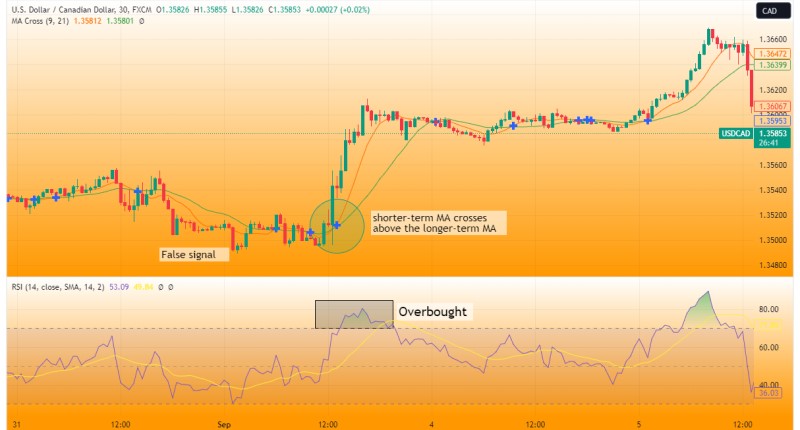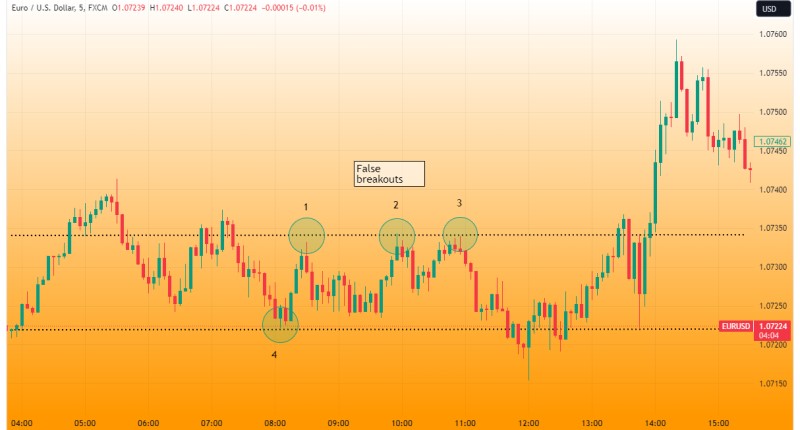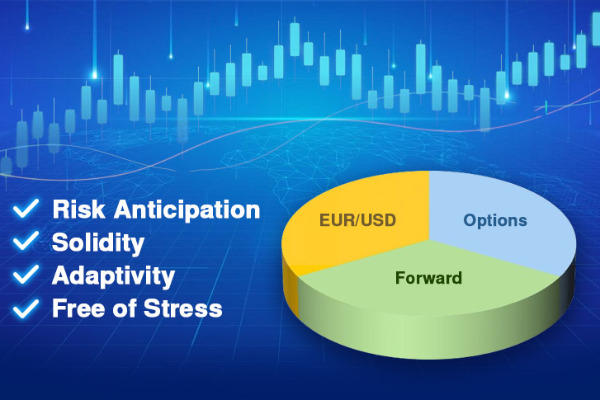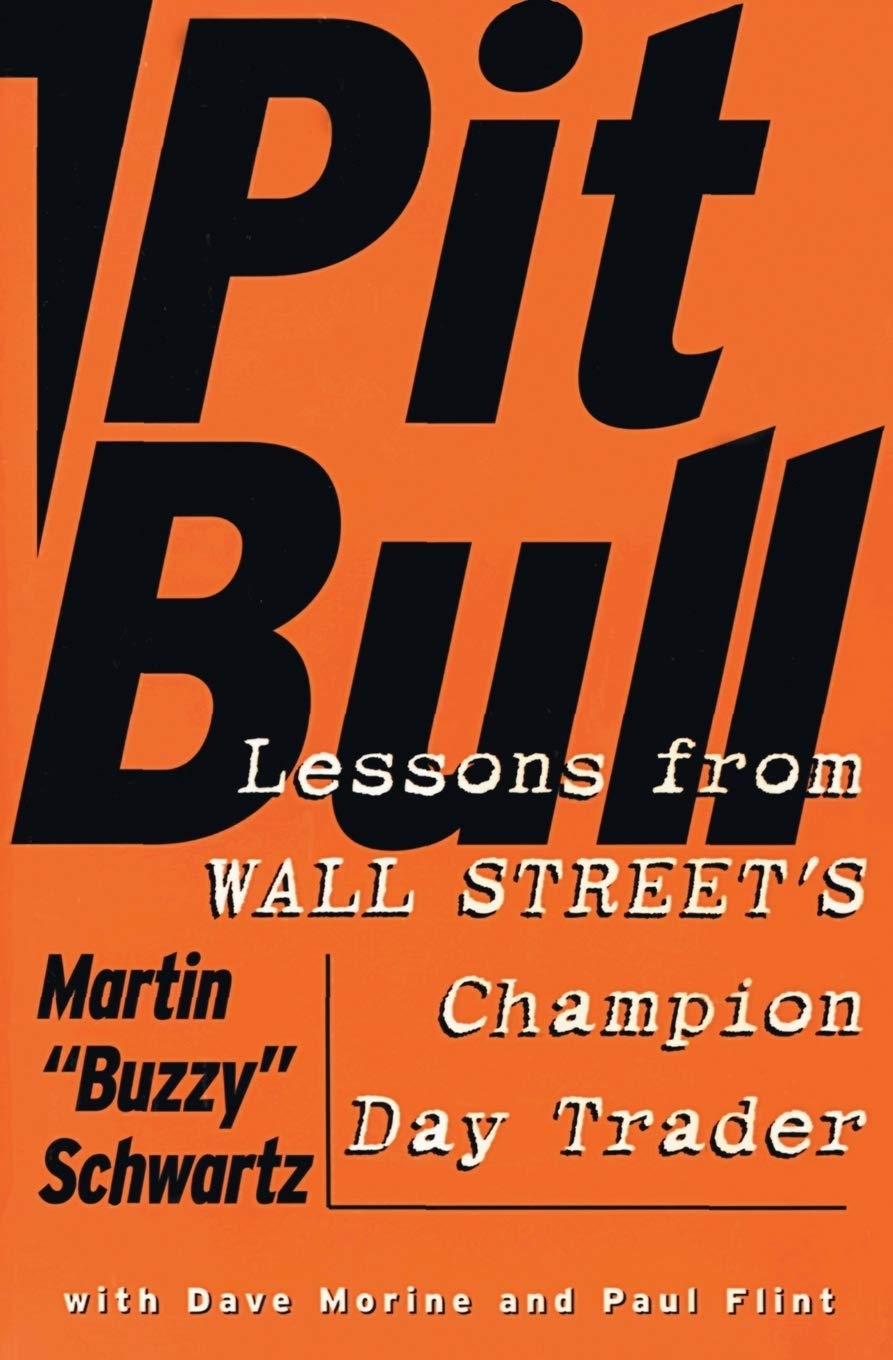False signals can lead to potential losses. Here are 6 tips on how to avoid false signals in forex trading.

Have you ever heard of false signals in forex trading or perhaps experienced them yourself?
False signals in forex trading are misleading indications or signs that suggest a price movement in a particular direction, but ultimately, the market moves in the opposite direction or doesn't follow through as expected.
Being deceived by false signals can have significant impacts on traders, both emotionally and in terms of their portfolios. Suffering losses due to misleading signals can lead to frustration, anxiety, and stress. If it leads to a loss of confidence, performance is likely to deteriorate, and as a result, the trading portfolio may suffer.
Therefore, to avoid lingering in the consequences of false signals, it's advisable to understand how to avoid them thoroughly.
Here are some recommended ways to avoid false signals in forex trading:
- Check the news.
- Review historical data.
- Combine technical indicators.
- Use larger timeframes.
- Use chart patterns.
- Avoid rushing when making decisions.
Let's take a look at each of the explanations one by one.
1. Always Check the News and Its Impact
News is often a common source of false signals. As you're aware, the market incorporates all available information, and before official news releases, prices tend to react and move in a particular direction.
So, the first thing you must do to avoid false signals is stay updated with the latest financial news and economic events. You can do this by regularly visiting reputable financial news websites, subscribing to economic calendars, or using trading platforms that provide real-time news feeds. Don't forget to consider market expectations as well.
However, not all news should be closely monitored because not all news events have the same level of impact on the market. Just focus on high-impact events such as interest rate decisions, GDP reports, employment data, and major geopolitical developments that are more likely to cause significant market movements. This way, you don't need to expend too much effort unnecessarily.
It's common for markets to experience increased volatility during and immediately after news releases. It's important to avoid opening new positions just before or during these events to prevent false signals unless you have a solid strategy for trading during high volatility.
2. Use Historical Data as References
After understanding the impact of news on price movements, don't forget to take notes on everything as material for future trading reviews. Historical data, which includes market responses to specific news events, can serve as a confirmation for trading signals derived from technical or fundamental analysis.
If historical data aligns with the present analysis, it instills additional confidence in the signal's validity, thus decreasing the chances of succumbing to false signals.
Historical data can also assist traders in maintaining discipline and preventing impulsive decisions (just like overtrading) influenced by short-term market fluctuations. By referencing historical trends, traders can make more rational and less emotionally driven trading decisions.
3. Use Multiple Technical Indicators
Another cause of false signals is errors in indicator calculations. Many traders tend to forget that after abrupt market movements, the data they receive becomes heavily distorted, leading to mistakes in their indicators. Moreover, many traders rely entirely on a single technical indicator, hoping it will generate profits effortlessly.
Therefore, try combining multiple indicators. Their purpose is to confirm signals with one another. One combination to consider is the MA Crossover and RSI. Moving Averages are known as lagging indicators, while RSI is considered a leading indicator.
When the shorter-term MA crosses above the longer-term MA (that's why it is called "crossover"), and RSI confirms overbought or oversold conditions, it can serve as a strong buy or sell signal. Take a look at the example below for reference.

The example above shows that the price is about to decrease. If an impatient trader were to see this, they would likely immediately place a sell order without attempting to confirm the signal first.
Therefore, to avoid losses like this, consider combining multiple indicators for stronger signal confirmation. In addition to the MA Crossover and RSI combination, you can also consider combining:
- Ichimoku Cloud and Fibonacci Retracements
- MA and Parabolic SAR
- Bollinger Bands and Stochastic
You can perform backtesting of indicators anytime using a demo account. Doing so will provide you with a comprehensive insight into the signals generated by your indicators, distinguishing between primary and secondary signals.
4. Use Larger Timeframe
Another reason why false signals can occur is due to the abundance of noise in smaller timeframes, such as 1 minute and 5 minutes. In these smaller timeframes, there are many opportunities for false breakouts, as illustrated below.

Therefore, it is advisable for you to switch to larger timeframes, ideally daily, to reduce the potential for false signals caused by factors like these. Charts with larger timeframes can help you gain a clearer picture of the main trends and key levels, as well as filter out noise.
However, larger timeframes may not be suitable for those using scalping techniques or other short-term strategies that capitalize on very small price movements.
5. Identify Through Candlestick Patterns
In forex trading, you're probably familiar with candlestick patterns. In theory, several patterns can provide clues about potential false signals or changes in price movements. Some of them include:
Doji Pattern
Doji pattern indicates uncertainty in the market. A Doji occurs when the opening and closing prices are nearly identical, creating a candle with a very small body. This can indicate that the market is in a consolidation phase or unsure about its next direction. If you see a series of Doji patterns after a specific signal, this could be a warning sign of a potential false signal.
Pin Bar Pattern
Pin Bar pattern has long tails and small bodies, indicating rejection at a certain level. This can suggest that the market is attempting to move in one direction but faces rejection. Observing a Pin Bar following a signal may indicate that the signal itself might not be accurate.
Head and Shoulders Pattern
The Head and Shoulders pattern consists of three peaks (left shoulder, head, and right shoulder) and a neckline that connects the lowest points between the peaks. It's a distinctive chart pattern that anticipates a shift from a bullish to a bearish trend.
It's important to remember that the three patterns mentioned above do not accurately detect false signals but rather provide clues about their potential, allowing you to determine a better entry point.
Identifying candlestick patterns also involves considering factors other than just the appearance of the pattern, such as trading volume, the dominant trend, and market context.
6. Don't Rush
One last thing you should do to avoid false signals is control your emotions. Never being in a hurry, panicking, or acting impulsively when facing challenging conditions is important.
Stay calm, don't follow your emotions, and think things through with a clear head. Acting impulsively in trading will only lead you to undesired losses.
For example, if your first position is closed by the Stop Loss (SL), do not rush to open an opposite one. In most cases, the market will continue toward your initial position. Note that you usually open an opposite order not based on strategy but driven by emotions.
Final Thoughts
False signals often haunt traders who don't know how to handle them properly. Frequently, the impact of false signals is exacerbated by the traders, involving emotions, leading to prolonged losses.
Therefore, implement the six tips above to avoid false signals in forex trading. Start by equipping yourself with an understanding of news, patterns, indicators, and even self-control to avoid rushing into decisions.
Forex trading is not just about success but also about facing losses. False signals are just one of the many reasons traders experience losses. Read the stories of traders who have faced losses and learned from their mistakes here.

 Dedicated FREE FOREX VPS
Dedicated FREE FOREX VPS Free FOREX Virtual Private Server
Free FOREX Virtual Private Server MT4 Demo Contest, Get $500
MT4 Demo Contest, Get $500 Sign Up for an Account, Claim 60% Deposit Bonus
Sign Up for an Account, Claim 60% Deposit Bonus Free MT4/MT5 VPS 2024
Free MT4/MT5 VPS 2024 Send E-mail and Get Free Merchandise
Send E-mail and Get Free Merchandise $1K Refer a Friend Bonus for Pepperstone Pro clients
$1K Refer a Friend Bonus for Pepperstone Pro clients Maximize Your Earnings with 100% Deposit bonus
Maximize Your Earnings with 100% Deposit bonus Trade to Win, $5,000 Monthly Demo Contest
Trade to Win, $5,000 Monthly Demo Contest Claim 30% + 15% Deposit Bonus from LiteFinance
Claim 30% + 15% Deposit Bonus from LiteFinance








